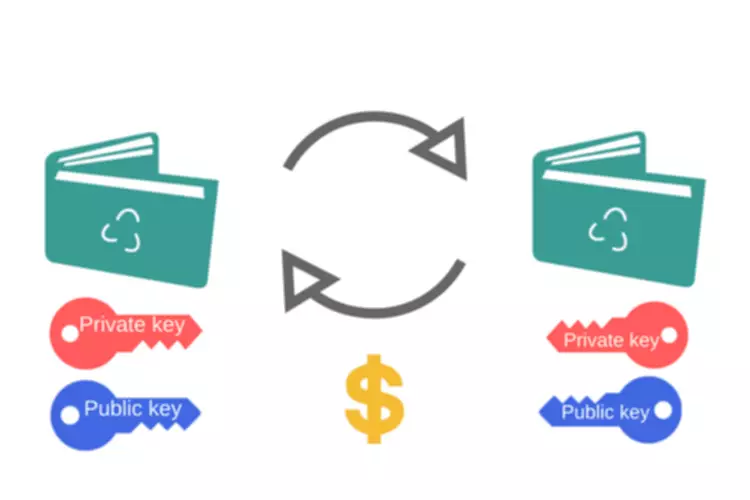We give you a realistic view on exactly where you’re at financially so when you retire you know how much money you’ll get each month. If the company’s Accounts Receivable amounts to $3,400 and its Allowance for Bad Debts is $100, then the Accounts Receivable shall be presented in the balance sheet at $3,300 – the net realizable value. Allowance for Bad Debts (also often called Allowance for Doubtful Accounts) represents the estimated portion of the Accounts Receivable that the company will not be able to collect. Accounts receivable is presented in the balance sheet at net realizable value, i.e. the amount that the company expects it will be able to collect.
Businesses account for bad debt expenditure when they have a receivable account that will not be paid. When a consumer cannot pay due to financial issues or refuses to pay due to a disagreement about the product or service they were sold, it is referred to collect synonym as bad debt. Some argue that debt should be classified as an operating expense because it’s necessary to run the company. They argue that doubtful debt shouldn’t be reported as a liability because the money is owed to creditors and not to shareholders.
- In other words, there is nothing to undo or balance as bad debt if your business uses cash-based accounting.
- Even good debts might become bad if they are not properly managed or if you borrow more money than you can afford to repay.
- Identifying uncollectible accounts requires evaluating the likelihood of payment from each customer.
- Staying informed and adaptable to changing market conditions is key to minimizing the impact of bad debts on the company’s financial health.
Bad debts expense refers to the portion of credit sales that the company estimates as non-collectible. One of the biggest credit sales is to Mr. Z with a balance of $550 that has been overdue since the previous year. Usually, the longer a receivable is past due, the more likely that it will be uncollectible.
If actual experience differs, then management adjusts its estimation methodology to bring the reserve more into alignment with actual results. The bad debt expense appears in a line item in the income statement, within the operating expenses section in the lower half of the statement. If your business allows customers to pay with credit, you’ll likely run into uncollectible accounts at some point. At a basic level, bad debts happen because customers cannot or will not agree to pay an outstanding invoice.
What Effect Does Declaring a Cash Dividend Have on Stockholders’ Equity?
However, the entries to record this bad debt expense may be spread throughout a set of financial statements. The allowance for doubtful accounts resides on the balance sheet as a contra asset. Meanwhile, any bad debts that are directly written off reduce the accounts receivable balance on the balance sheet.
- Bad debt expense is a financial term used to describe the amount of credit sales that a company realistically anticipates will not be paid by customers.
- You should not misuse excellent debts, even when they provide long-term rewards.
- If you have $50,000 of credit sales in January, on January 30th you might record an adjusting entry to your Allowance for Bad Debts account for $3,335.
- The estimated percentages are then multiplied by the total amount of receivables in that date range and added together to determine the amount of bad debt expense.
- If you do a lot of business on credit, you might want to account for your bad debts ahead of time using the allowance method.
By monitoring BDE, companies can better manage their credit risk and assess the value of their accounts receivable. The second is the matching principle, which requires that expenses be matched to related revenues in the same accounting period they are generated. Bad debt expense must be estimated using the allowance method in the same period and appears on the income statement under the sales and general administrative expense section. Since a company can’t predict which accounts will end up in default, it establishes an amount based on an anticipated figure. In this case, historical experience helps estimate the percentage of money expected to become bad debt. Two primary methods exist for estimating the dollar amount of accounts receivables not expected to be collected.
Good Debts Example
This is a debit to the bad debt expense account and a credit to the accounts receivable account. In contrast to the direct write-off method, the allowance method is only an estimation of money that won’t be collected and is based on the entire accounts receivable account. The amount of money written off with the allowance method is estimated through the accounts receivable aging method or the percentage of sales method. A bad debt expense is a portion of accounts receivable that your business assumes you won’t ever collect.
Preventing Bad Debts
The aging method (developed in 1934) is arguably the most popular and easiest method for calculating bad debt expense. The accounts receivable aging method involves the balancing of uncollectible accounts receivable. This is estimated by projecting the percentage of doubtful debts over a defined period.
What is bad debts expense?
Companies classify them as operating expenses since they do not relate to their core activities. The direct write-off method is a technique used to account for uncollectable receivables. It involves writing off bad debt expense directly against the receivable account. This method records a specific dollar amount from the customer’s account as bad debt expense.
A significant amount of bad debt expenses can change the way potential investors and company executives view the health of a company. However, the direct write-off method can result in misstating the income between reporting periods if the bad debt journal entry occurred in a different period from the sales entry. For such a reason, it is only permitted when writing off immaterial amounts. The journal entry for the direct write-off method is a debit to bad debt expense and a credit to accounts receivable. To estimate bad debts using the allowance method, you can use the bad debt formula. The formula uses historical data from previous bad debts to calculate your percentage of bad debts based on your total credit sales in a given accounting period.
On top of that, users must understand what expense classify as the cost of goods sold. When a company deems a balance irrecoverable, it must record a bad debt expense. Usually, companies use historical information to determine if a debt has gone bad. For example, if a customer goes under liquidation, the recoverability of their owed amount becomes nil. Once companies determine a balance to be uncollectible, they must record a bad debt expense.
Even if your organization does not have a specific grant writer or development director, there is likely someone, such as the executive director, spending time cultivating these donations. Because that time is focused on fundraising activities, a portion of that person’s salary should be allocated to fundraising. However, there are some types of organizations that generally do not have fundraising expenses. These include religious organizations, private foundations, or an entity that has no paid staff where most, or all, contributions arise from uncompensated board members soliciting contributions. As can be seen in the chart, only three of the nine organizations treat the majority of their advertising as overhead. In our last two ports of call on our Chart of Accounts Grand Tour, we visited Accounts and Pledges Receivable and also looked at Accounts Receivable Aging and Due Dates.












